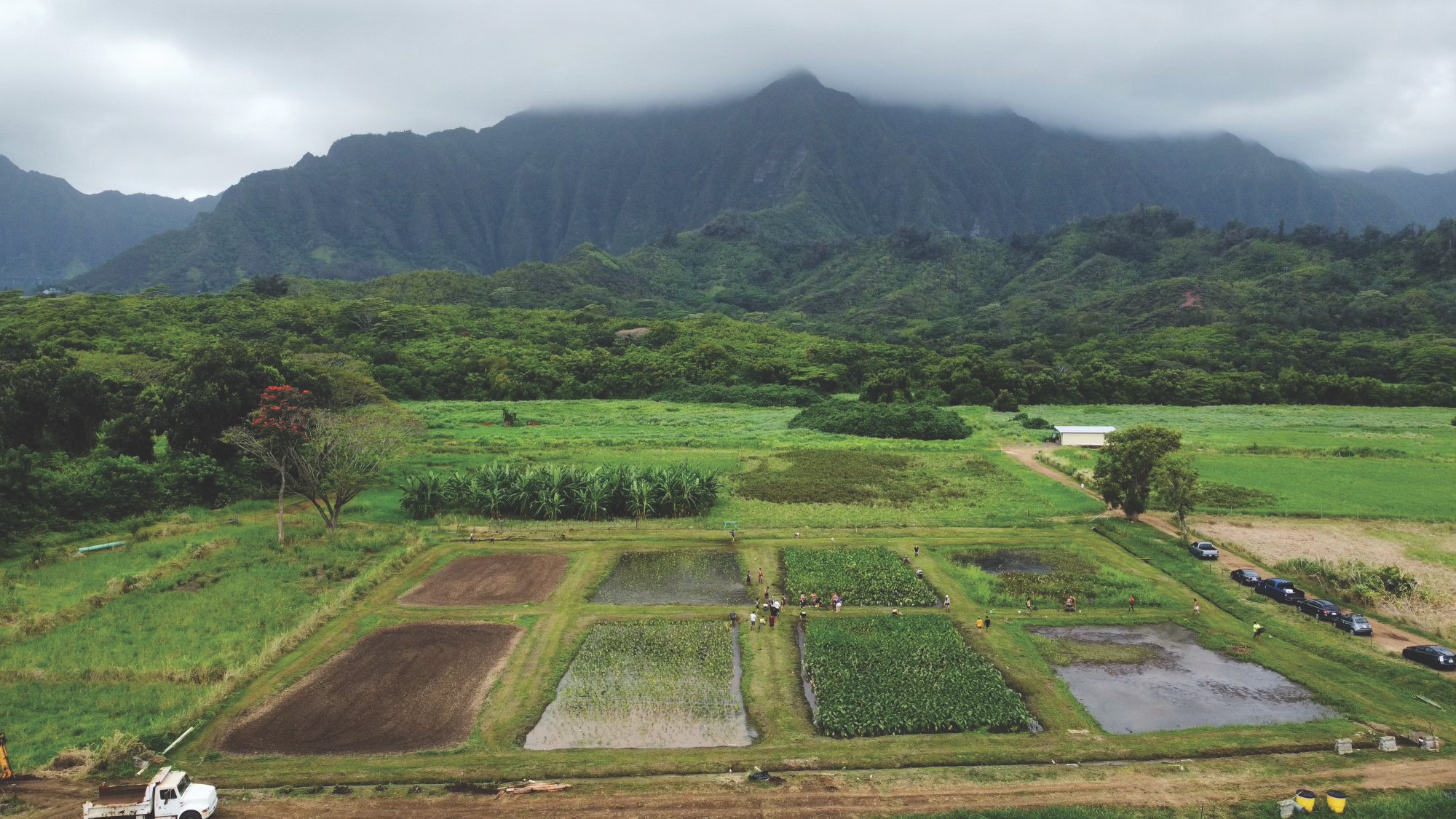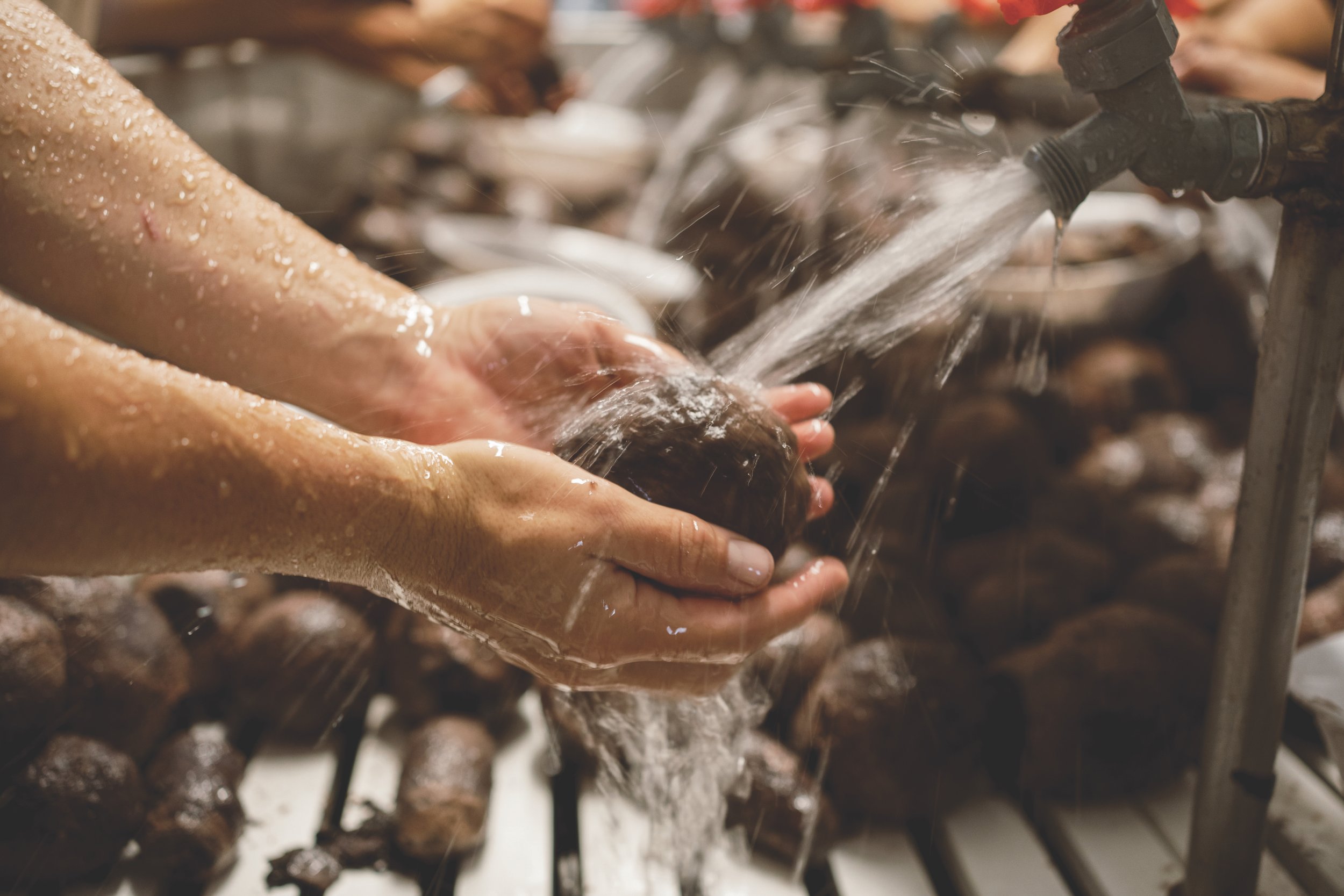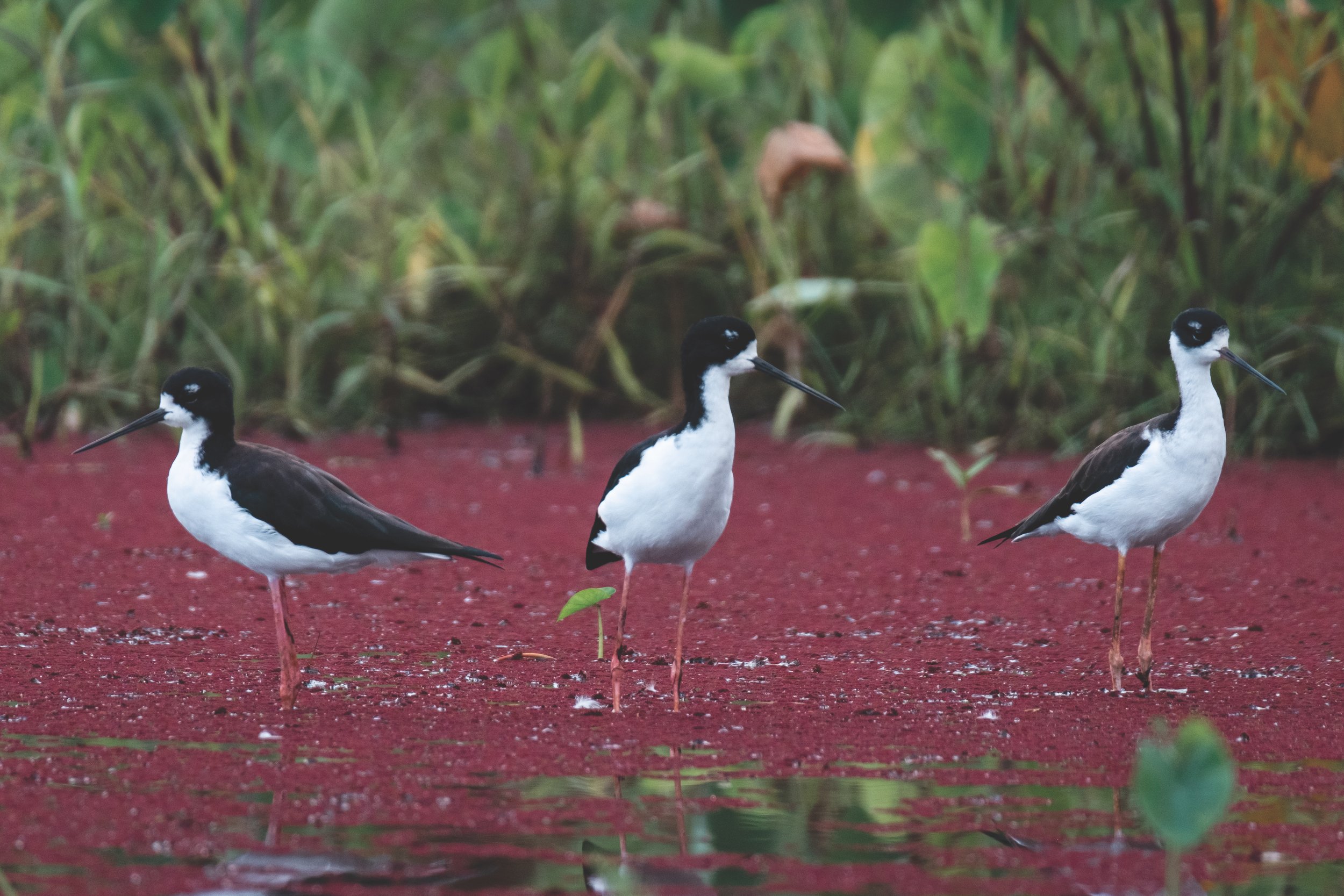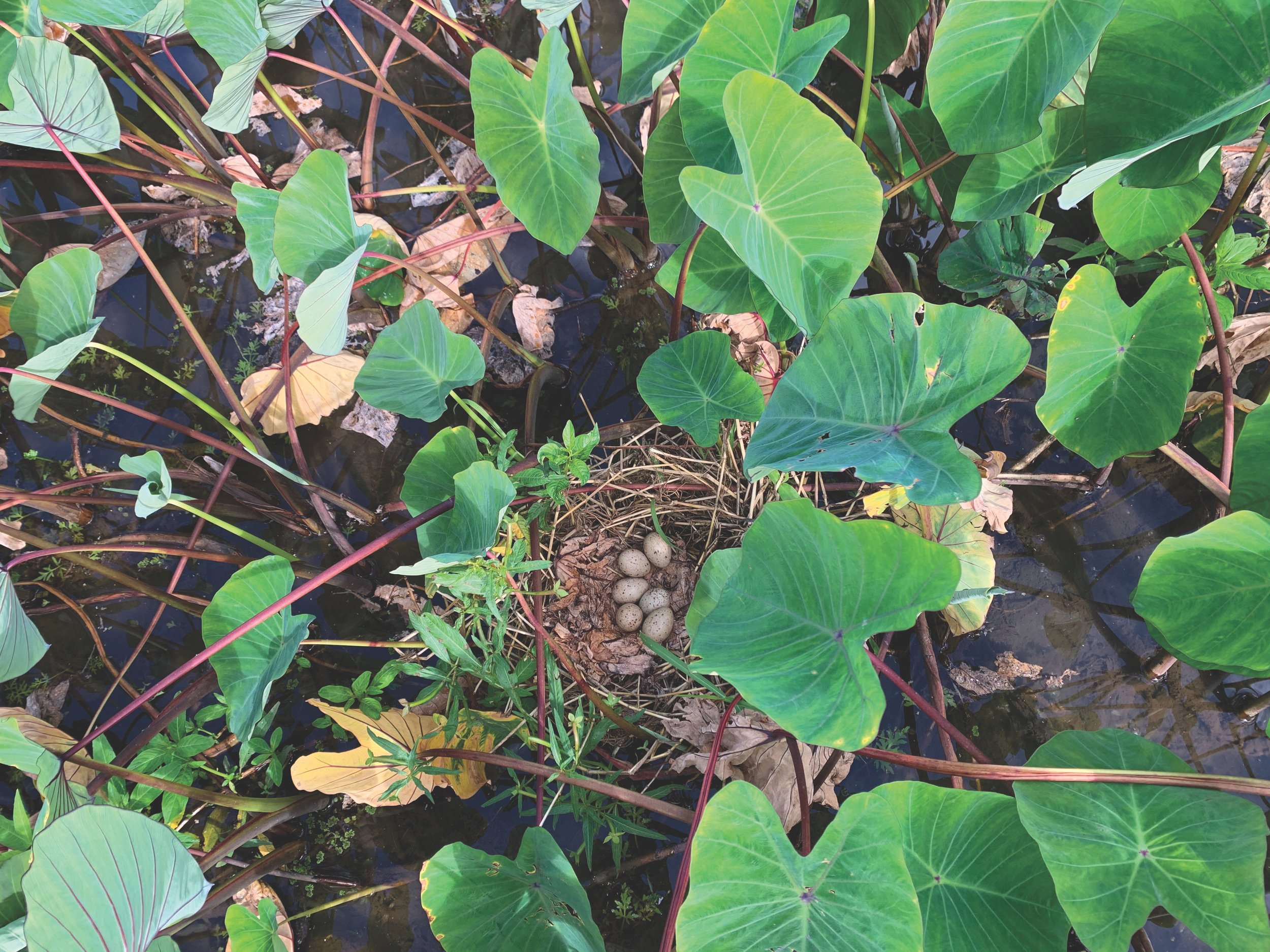Native Instincts





With a good dose of TLC, the ecosystem of Hawai‘i could look something like this: a multitude of native systems, full of diverse species, working together to create a healthy, sustainable environment from which everyone benefits. No more invasive mangrove or grass or anything of the sort. Just thriving land and water producing food as they should be.
Such has been the mission of nonprofit organization Kako‘o ‘Oiwi, which was first founded back in 2006. In 2010, the organization took over a lease from Hawai‘i Development Community Authority for 405 acres of land within He‘eia Wetlands—or as it is also known, Hoi—where Executive Director Jonathan Kanekoa Kukea Shultz says staff and volunteers work to fulfill their mission of perpetuating Native Hawaiian culture and practices.
“Our main focus is looking at traditional ahupua‘a management,” Shultz says. “We’re trying to show people what a traditional ahpua‘a system was and is, and how it’s applicable in the 21st century.”
Specifically, Kako‘o ‘Oiwi has focused on restoring the land it has been charged with overseeing, so that it may be used for traditional farming purposes. To do this, the group has worked on removing alien species from the area.
“If you remove nonnative species, the hope is that you can return those systems back into a native system,” Shultz says. “Native systems seem to be much more resilient to climate and cultural impacts than nonnative systems. So, it’s just one strategy that we use to mitigate climate impacts.
“By having a much more diverse system, it allows for a wider range of food,” he adds.
Their efforts have been met with success, too. According to its website, Kako‘o ‘Oiwi has since produced more than 50,000 pounds of kalo and poi that it offers to the community for purchase. Other produce the organization sells includes ‘ulu, lemongrass, ho‘io fern shoots and more.
To further this mission, last winter, Kako‘o ‘Oiwi also recently opened its brand-new Opu Nui Center, which houses a commercial kitchen and poi mill. In addition to serving as a location for Kako‘o ‘Oiwi staff and volunteers to process produce, the organization also hopes to offer it up for a nominal fee to those looking to kickstart their own product lines.
With so much going on, Shultz says the group always welcomes any helping hand. Every first Saturday, for example, Kako‘o ‘Oiwi hosts a community workday in its lo‘i for volunteers to assist with weeding and maintenance. Additional opportunities to pitch in also take place during the week.
Another way to get involved is making a monetary donation. “Native systems always need funding and support,” Shultz says. “It’ll be a perpetual raising of money because as we grow our products and people purchase our products, that revenue basically goes back into the conservation and education arm of Kako‘o ‘Oiwi.”
For his part, Shultz joined the organization shortly after it was established, having previously worked with The Nature Conservancy. His greatest enjoyment at Kako‘o ‘Oiwi has been in the camaraderie it encourages, to hear him tell it.
“It’s super cliché, but we are greater ... together than the sum of our parts,” he says. “We’ve accomplished so much, and that’s really because of everybody around us. It was a team effort, a group effort, a community effort.
“We couldn’t have done this without the kupuna,” he adds. “We couldn’t have done this without the support of our public and private partners, our legislators, and then obviously the Kako‘o ‘Oiwi staff itself, and our families’ support. It really is a family effort.”
For more information on Kako‘o ‘Oiwi, visit kakoooiwi.org. To sign up for a community workday, email info@kakoooiwi.org.
